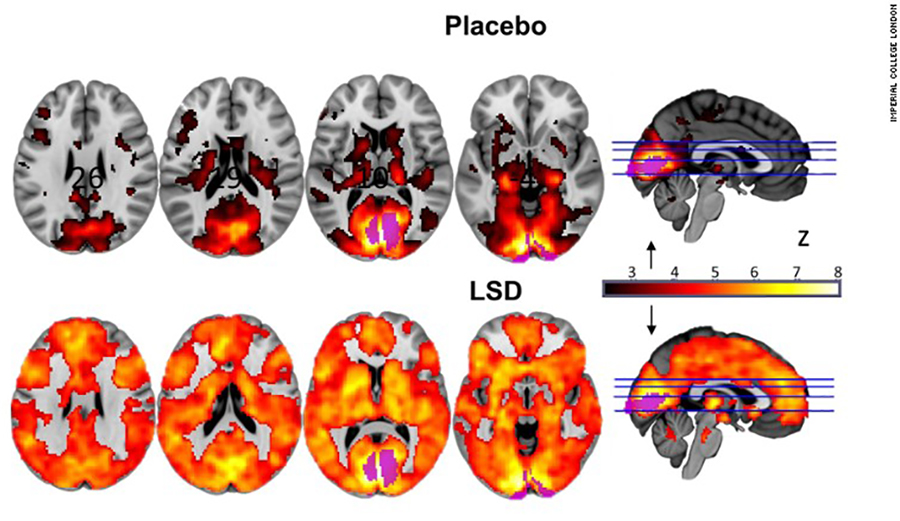
Photo: Shutterstock.
We’ve long known the effects of LSD or Lysergic acid diethylamide. The illegal, recreational drug has been around for a while. It was developed in the late 1930’s, tested throughout the 1950’s, and made popular recreationally in the 1960’s and 70’s. LSD is known for causing visual hallucinations, a sense of euphoria or wellbeing, and distorted perceptions of time, colors, and objects.
However, until now, LSD’s direct effects on the brain have remained a bit of a mystery. Just this week, researchers at Imperial College London released a report analyzing what happens to the brain when an individual takes LSD. Using brain scanning technology and other techniques, the researchers were better able to explain the effects of the drug from a physiological standpoint.
The researchers explained that normally, the eye collects visual data that is processed by the visual cortex, one segment of the back of the brain. However, when using LSD, many other parts of the brain also participate in the process. These segments process the visual information as well.
In fact, the entire brain seemed to light up with activity when a participant consumed LSD and experienced hallucinogenic symptoms. Activity in the visual region surged. Blood flow to the area as well as communication with other parts of the brain both dramatically increased.
Study leader Dr. Robin Carhart-Harris explained that,”Our results suggest that this effect underlies the profound altered state of consciousness that people often describe during an LSD experience.”
Cahart-Harris also said that, “It is also related to what people sometimes call ‘ego-dissolution,’ which means the normal sense of self is broken down and replaced by a sense of reconnection with themselves, others and the natural world. This experience is sometimes framed in a religious or spiritual way — and seems to be associated with improvements in well-being after the drug’s effects have subsided.”

Well, that’s a dramatic difference. Photo: Imperial College London.
This figure from the study demonstrates the dramatic difference between normal brain function and brain function while using LSD. This difference certainly explains the strange and powerful effects one experiences while using the drug.
Only time will tell, but the implications of this study could be sweeping. Some believe that the evidence provided by this study, along with several others, could support the use of LSD for the treatment of addiction and depression.

